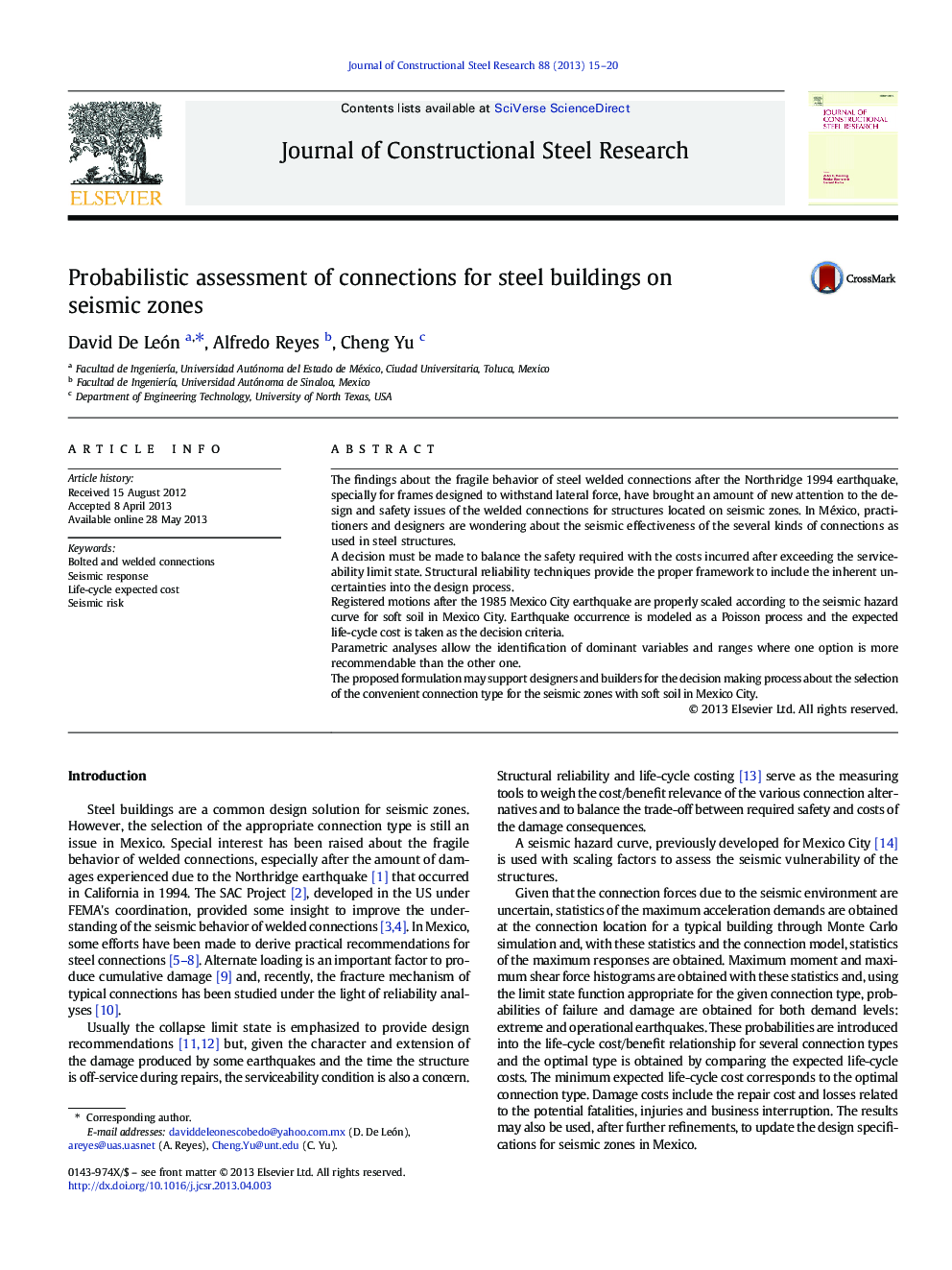| Article ID | Journal | Published Year | Pages | File Type |
|---|---|---|---|---|
| 284888 | Journal of Constructional Steel Research | 2013 | 6 Pages |
•A risk-based decision tool has been presented to select connection types.•The tool is applied to a steel building under seismic loads.•The selection is based on the comparison between failure costs and benefits.•The approach provides the user more options as compared to regular practice.
The findings about the fragile behavior of steel welded connections after the Northridge 1994 earthquake, specially for frames designed to withstand lateral force, have brought an amount of new attention to the design and safety issues of the welded connections for structures located on seismic zones. In México, practitioners and designers are wondering about the seismic effectiveness of the several kinds of connections as used in steel structures.A decision must be made to balance the safety required with the costs incurred after exceeding the serviceability limit state. Structural reliability techniques provide the proper framework to include the inherent uncertainties into the design process.Registered motions after the 1985 Mexico City earthquake are properly scaled according to the seismic hazard curve for soft soil in Mexico City. Earthquake occurrence is modeled as a Poisson process and the expected life-cycle cost is taken as the decision criteria.Parametric analyses allow the identification of dominant variables and ranges where one option is more recommendable than the other one.The proposed formulation may support designers and builders for the decision making process about the selection of the convenient connection type for the seismic zones with soft soil in Mexico City.
